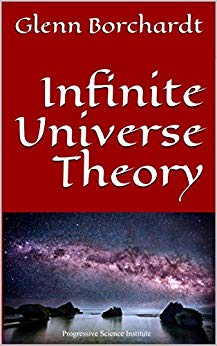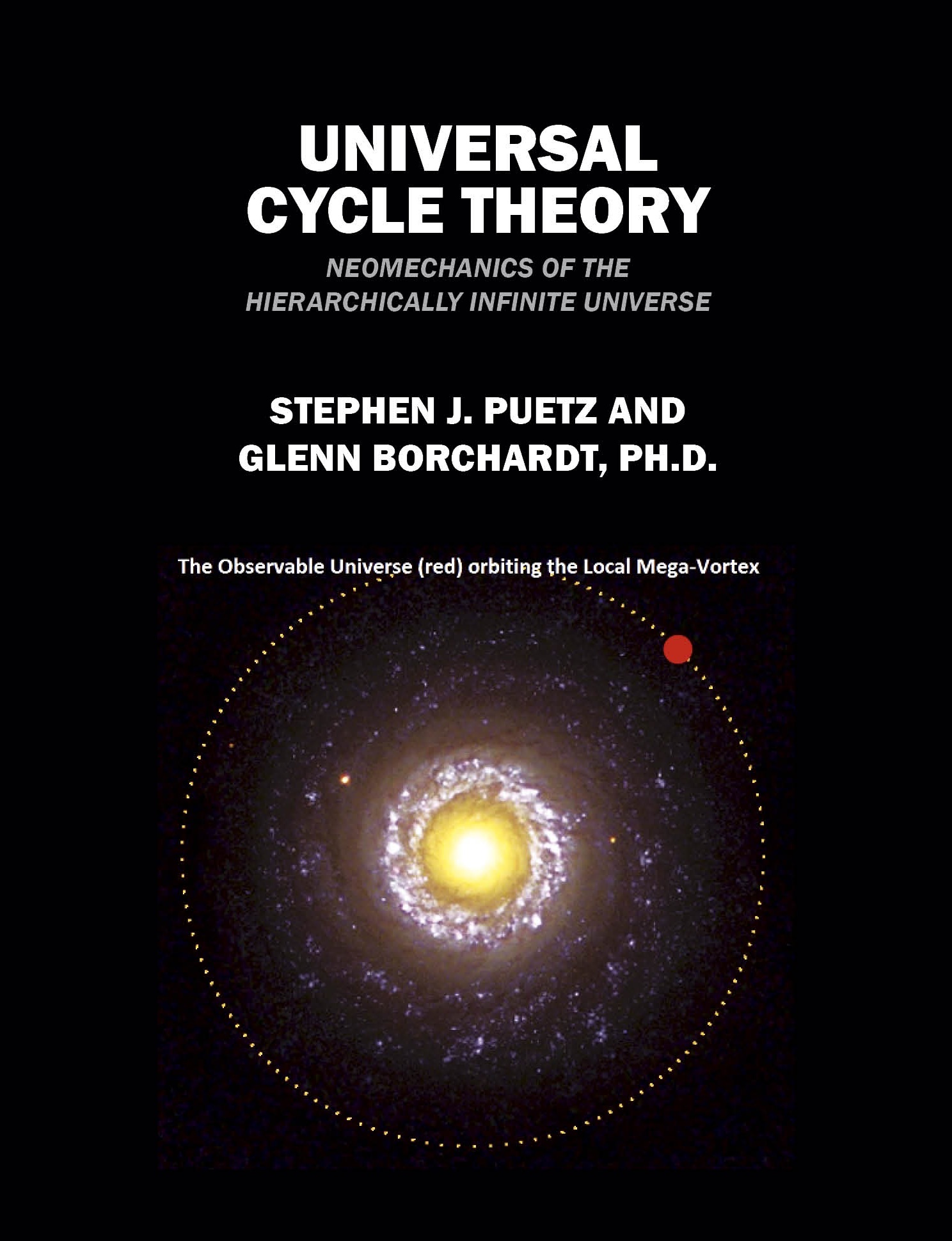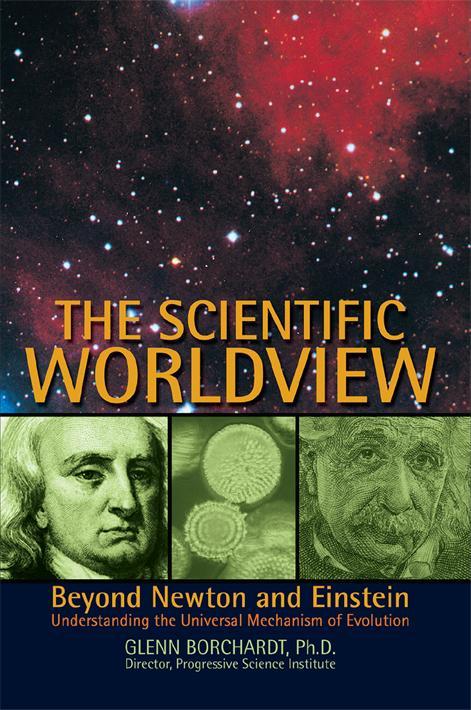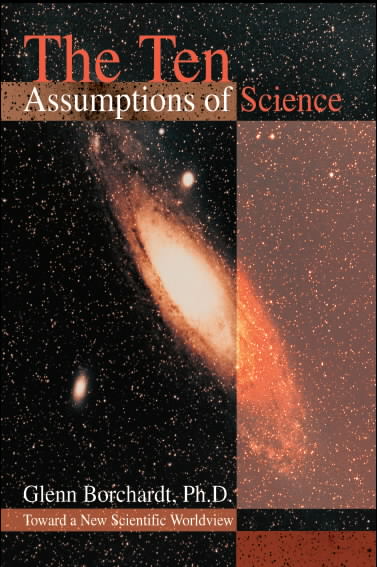Pages: 324
Publisher: Progressive Science Institute, Berkeley, CA
Year: 2017
Websites: www.scientificphilosophy.com/
Infinite Universe Theory presents the ultimate alternative to the Big Bang Theory and the common assumption that the universe had an origin. Author Glenn Borchardt starts with photos of the “elderly” galaxies at the observational edge of the universe. These contradict the current belief that the universe should have increasingly younger objects as we view greater distances. He restates the fundamental assumptions that must underlie the new paradigm. Notably, by assuming infinity he is able to adapt classical mechanics to “neomechanics” and its insistence that phenomena are strictly the result of matter in motion. He shows in detail how misinterpretations of relativity have aided current flights of fancy more in tune with religion than science.
Borchardt demonstrates why only Infinite Universe Theory can provide answers to questions untouched by currently regressive physics and cosmogony. His new modification of gravitation theory gets us closer to its physical cause without calling upon attraction or curved spacetime or “immaterial fields.”
This is the book for you if you have doubts about the universe exploding out of nothing and expanding in all directions at once, that the universe has more than three dimensions, or that light is a massless wave-particle that defies the Second Law of Thermodynamics. Borchardt has put forth a solid case for an Infinite Universe that extends in all directions and exists everywhere and for all time.
“What a great read! Thanks so much for a book full of great ideas. I love the Q&A format; it’s very satisfying to have good answers to clearly stated questions.” -Rick Dutkiewicz
“Truly brilliant.” -Jesse Witwer
“A radical, daring, and innovative demolition of regressive physics, from the creation of ‘something out of nothing’ to the ‘God Particle.’” -William Westmiller
"Glenn Borchardt's book uses the hammer of Infinity to explain and destroy the junk theories that plague 'Official' physics today. This is a book that should be used in college courses, to give students a basic understanding of how physics is done. Physics has 'gone off the rails' for a century and it is books like Borchardt's that will return physics from its current unscientific and anti-materialist base and back on to a scientific and materialist road." -Mike Gimbel
“What a fascinating read!” -Juan Calsiano
Pages: 626
Publisher: Outskirts Press
Year: 2011
ISBN: 1432781332
ISBN: 978-1432781330
Websites: www.universalcycletheory.com
Cycles are crucial because they explain how matter moves. Motions develop because of two types of cycles - vortices and waves. A vortex causes matter to rotate, which produces circular cycles. And waves cause matter to compress-and-decompress in repeated oscillations, which produce linear cycles. According to the Universal Cycle Theory, these two basic motions explain much, if not most, of what happens in the universe.
Infinity is crucial because it explains the extent and structure of the universe. Based on logic and observations, we assume that matter is infinitely divisible and integrable. We also assume that time was infinite in the past and will be infinite in the future. From the literature, we could not find an example of this concept of infinity previously employed in a model of the universe. Indeed, this model is unique. Importantly, it explains many of the paradoxes and contradictions currently riddling physics and cosmology.
This explains the title of our book - Universal Cycle Theory: Neomechanics of the Hierarchically Infinite Universe. Cycles explain the motions in the universe, infinity explains the hierarchical structure of the universe, and neomechanics explains the physical laws used in the theory. Think of neomechanics as an adaptation of classical mechanics to conform to infinity.
The neomechanical worldview offers something that no other theory has to this point - unique insights and perspectives into some of the most challenging dilemmas facing scientists. For example, the neomechanical model helped us discover the cause of gravitation. More than three centuries ago, Newton developed an equation for gravitation. However, no one has ever identified the actual physical cause. The prevailing view, of course, is that gravity is a pull; whereas, we describe it as a push.
Gravitation follows the inverse-square law, just as Newton said; it involves inertia, just as Einstein said; it involves pushing, just as Lesage said; it includes vortex motion, just as Descartes said; and it entails aether, just as many philosophers since the ancient Greeks said. Even though we agree with these old and much-debated gravitational theories, none of them are adequate. In formulating the neomechanical theory of gravitation, we took the best from the best, and added a few new ideas. The rest fell into place with little effort. We discovered that gravitation results from aethereal pressure - nearly the same as air pressure. After reading the book you will wonder: "Why didn't I think of that myself?"
New theories purporting to explain the universe are common. However, supporting a theory with credible evidence is another story. This book explains the physical reason for gravitation in great detail. Of course, gravitation is so basic, and its solution formerly so intractable, that one should expect the discovery of its physical cause to impinge on the rest of science. As exciting as it is, this discovery only represents the tip of the iceberg. It also gives solutions to other puzzles by using neomechanics. The revelations included dark matter, dark energy, dark flow, black-holes, magnetic bonding, molecular bonding, light wave propagation, geomagnetic reversals, volcanic episodes, climatic cycles, mass-extinction cycles, and much, much more. To make a long story short, it has too much intriguing content to tell in this brief introduction.
Pages: 411
Publisher: iUniverse
Year: 2007
ISBN: 0595392458 paper
ISBN: 0595837735 hc
ISBN: 0595836372 pdf
Websites: www.scientificphilosophy.com
Pages: 125
Publisher: iUniverse
Year: 2004
ISBN: 0-595-31127-X paper
ISBN: 0-595-66263-3 hc
ISBN: 0-595-75955-6 pdf
Websites: www.scientificphilosophy.com
Although the book makes an
excellent supplement to college courses in scientific philosophy, it is
an astounding eye-opener for the educated reader with an interest in
science and philosophy. Except for the introduction, which covers the necessity for fundamental assumptions and the method for discovering them, this book is now Chapter 3 in The Scientific Worldview.





